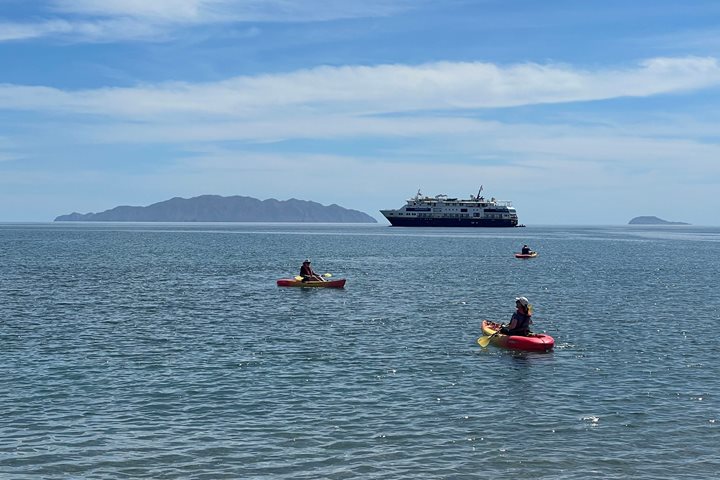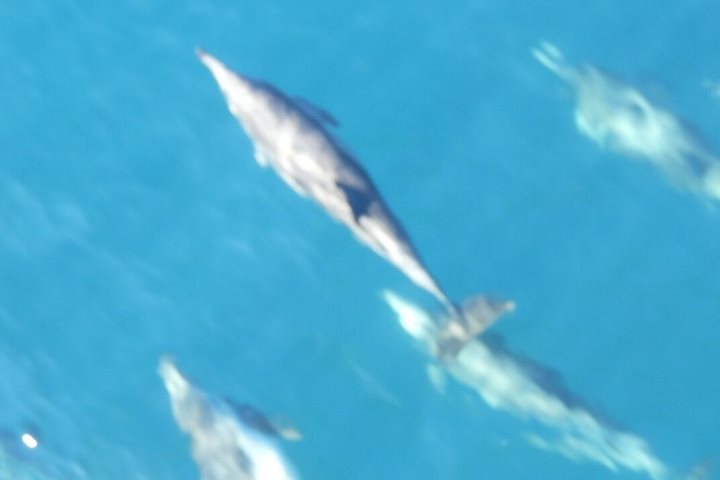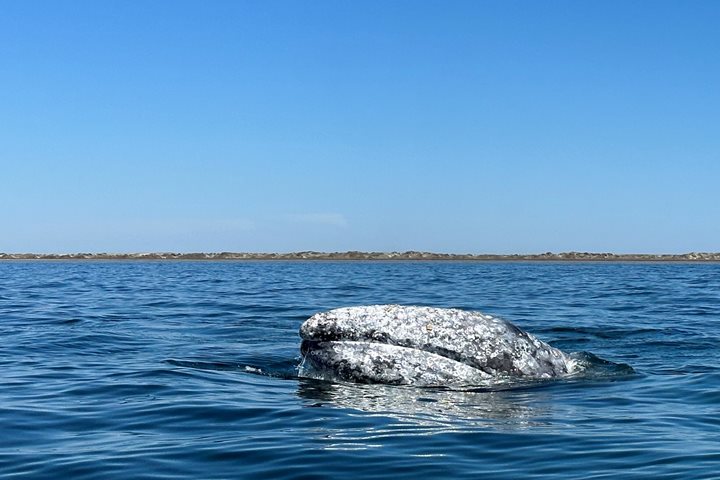During the night we traveled farther northward into the upper Gulf of California. By early morning we reached the region known as the Midriff Islands where we anchored near Isla San Esteban. As the eastern horizon brightened beneath a waning night sky, the earliest risers headed ashore for sunrise. Once on shore, we ascended a low ridge to watch and photograph the sunrise beyond the arcing silhouettes of cardon cactus.
After breakfast we returned again to shore to explore the desert. Along the upper reaches of the cobble beach, yellow-footed gulls were incubating their eggs cupped in nests of dried seaweed. Farther inland we saw many huge cardon cactus, as well as the endemic hedgehog and mammalaria cacti. We also found the endemic lizard species that are only known from this island; pinto chuckwallas and spiny-tailed iguanas, both reaching up to two feet in length.
Our destination for the afternoon was Isla Rasa, a low rocky and rather flat island that appears quite unremarkable from a distance. However, this small outpost in the sea is the annual nesting grounds for nearly half a million seabirds. On this island, of only about 140 acres, 95% of the entire world population of Heermann’s gulls and elegant terns return every year to mate and rear their chicks. The island, shorelines and surrounding waters were teeming with these birds, here to begin their annual breeding cycle. We all went out in our inflatable boats to drive leisurely along the island’s bustling shores. Elegant terns screeched with glee overhead, and Heermann’s gulls by the hundreds dipped and bathed in the nearshore waters. Many hundreds of brown pelicans were roosting along the eastern shoreline. A pair of osprey were feeding their two large chicks on a promontory nest site, and many people also saw the resident peregrine falcons circling above the island. The sun eventually dipped low over the horizon as birds continued to fly overhead. We retreated back into our comfortable ship, feeling both exhausted and elated.







